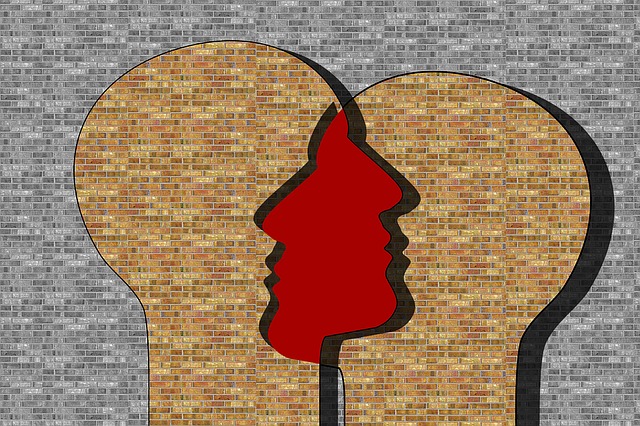In the second of a four-part series on conflict resolution, facilitation experts Toby Berkman and Dan Egol explore why identity – and specifically knowing how to navigate both internal and external perceptions of identity – are key for building trust and an authentic connection for successful conflict resolution.
We believe it is critical for facilitators to recognise that identity in part involves two sides of a coin: our own, self-perception of who we are (‘internal’ identities) and how we are viewed by others (‘external’ identities). These perceptions may not always be aligned, and this lack of alignment may result in untapped opportunities for building trust and connection.
For example, Dan, one of this post’s co-authors, has maternal grandparents who are both Cuban; he has many aunts, uncles and cousins still on the island whom he visits regularly. He speaks Spanish, cooks Cuban cuisine and considers his Cuban roots an important part of who he is. However, this feature of Danny’s identity is often invisible to others as he looks (and also identifies as) White, given that his father’s family is Jewish. Although his Latinx identity resonates internally for Dan as a key part of his self-image, others may make assumptions about his experience and cultural background that overlook this part of his life based on his external physical features.
Managing lack of alignment between internal and external identities
For individuals who belong to groups with less social capital and/or, like Dan, who belong to multiple groups, there can be a significant cost – in additional emotional and cognitive labour – in trying to manage the lack of alignment between internal and external understandings of identity. In referring to the experience of Black people, W.E.B Du Bois (The Souls of Black Folk, 1903) coined the term “double consciousness” to describe “this sense of always looking at one’s self through the eyes of others.”
While everyone may respond differently to how they are viewed by others, external perceptions of one’s group identities can overshadow people’s self-perceptions. Repeated interactions with others that highlight their group identities can cause them to ‘internalise’ the most socially salient identities (whether positive or negative) at the expense of the much richer set of identities and experiences that we all embody.

Bringing internal identities into the open
For facilitators, these observations suggest the importance of working to become more aware of our internal identities, how we are likely to be perceived by stakeholders, and how both of these factors relate to the interaction at hand. Facilitators should carefully plan when and how to bring potentially unrecognised internal identities into the open, communicating them to clients and stakeholders when disclosure helps to move the conversation forward or creates the opportunity for others to reciprocate openness.
As our colleague, Michele Ferenz, Senior Mediator at the Consensus Building Institute (CBI) aptly pointed out: “At end of the day it’s about authenticity and not pretending to be something you’re not,” she says. “We need to be able to authentically and ethically convey how ‘my story is part of your story’.” This kind of disclosure should, of course, coincide with an emphasis on the facilitator’s impartial role. Without this sense of who you are as a facilitator and why you care about a particular group or problem, however, stakeholders may doubt your intentions and authenticity in working with them to help address the problem or conflict.
Addressing stakeholder preferences for facilitator identities
Sometimes, talking explicitly about both internal and external identities can have surprising results. While there may be an assumption that stakeholders and clients value working with facilitators whose identities mirror their own, this is not always the case. CBI’s experience suggests that, in some instances, stakeholders may even prefer a facilitator who is seen as an outsider and is therefore more “neutral” or capable of offering perspectives that insiders cannot by virtue of being too entrenched in the conflict.
For example, the organisers of a dialogue among Inuit representatives on a climate impact assessment approached CBI for advice, and we offered to refer them to a skilled facilitator with an indigenous identity. However, the organisers suggested that an indigenous facilitator would bring his or her own identify conflicts, and a White American from CBI would do just fine.
Of course, facilitators should also be prepared to step away from engagements if it becomes clear that stakeholders value a particular kind of identity-based experience that the facilitator cannot provide. For example, at the end of a process seeking to improve the Farm Bill for socially-disadvantaged farmers and ranchers, an African-American leader turned to the White CBI facilitator and said: “You did a good job, but next time we need a person of colour in your role. We need to build capacity and grow a wider range of who does your work.”
The key is to recognise when stakeholders may have a concern or preference related to facilitator identity, and represent oneself openly and with authenticity; and, when necessary, be willing to tactfully, but explicitly, address the issue of facilitator identity.
Creating spaces for stakeholder discussion of identities
While this series of posts focuses on how facilitators can effectively manage their own identities, culturally savvy facilitators should also consider how these same dynamics are at play with stakeholders; in particular those from marginalised groups who may be experiencing the additional labour of navigating spaces where they are underrepresented. These stakeholders may be particularly attuned to the lack of alignment between their internal and external understandings of identity based on experiences in other contexts and therefore bring this lens into the facilitation process. The kind of effective facilitation that can transform conflict involves creating spaces safe enough for participants to disclose their deeper “internal” selves and uncover previously unspoken commonalities.
In part three of this series next week, we will address ‘lived versus learned’ experiences as key components and perceptions of identity. You can also find more information on this topic on the CBI’s website.
ABOUT THE AUTHORS

Toby Berkman is an Senior Associate at the Consensus Building Institute (CBI), where he designs and facilitates inclusive dialogue around difficult public and organisational issues. Dan Egol is Co-Founder and Executive Director of Inclusion NextWork, a community of emerging leaders and organisations committed to Inclusion, Diversity, Equity, Accessibility and Social Justice (IDEAS). Email: tberkman@cbi.org or dan.egol@inclusionnextwork.org.

Check out past guest columns by Berkman & Egol:
Understanding identity through an ‘intersectional’ lens to help achieve successful conflict resolution for both stakeholders and facilitators.
Why “understanding identity” is key to successful conflict resolution. Click here to read more.







































